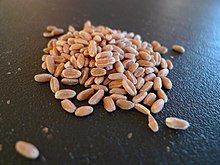
The Building land is a hill country in the north Baden-Wuerttemberg.It is between Odenwald, Taubertal and the Hohenloher level with the Jagsttal.
places
- 1 Aristocratic home

- 2 Maple (bathing)

- 3 Cheap home

- 4 Boxberg
 : Green spelled production not only in museums
: Green spelled production not only in museums - 5 Book
 : District museum in the former Electoral Mainz office and the nearby stalactite cave
: District museum in the former Electoral Mainz office and the nearby stalactite cave - 6 Elz Valley

- 7 Hardheim

- 8 Höpfingen

- 9 Külsheim

- 10 Osterburken
 : modern church of St. Kilian and ancient remains of the Romans with Roman museum and Limes
: modern church of St. Kilian and ancient remains of the Romans with Roman museum and Limes - 11 Ravenstein

- 12 Rosenberg

- 13 Schefflenz

- 14 Seckach

- 15 Walldürn
 : Pilgrimage basilica, Limes and Odenwälder open air museum
: Pilgrimage basilica, Limes and Odenwälder open air museum
background
The building land is one of the south-west German tiered landscapes. It is located in the northeast of the former North Baden and was also called due to its climatic conditions Baden Siberia designated. Another name specifically for the northern part of the region is that Madonnenlandchen, numerous wayside shrines in the open landscape and figures of Mary on older houses still attest to this today.
Politically, the building land belongs to the Neckar-Odenwald district, which is a district town Mosbach. The western part of the circle belongs to Baden Odenwald, The demarcation to building land is not very clear, for the sake of simplicity one likes to follow the course of the B27. The red sandstone of the is a better sign of this Buntsandstein-Odenwaldes in contrast to the shell limestone of the building land. The demarcation from Tauberfranken is also not very clear, and the locals often don't take it exactly either. In the south-east, the building land merges into the Hohenloher level, Here the demarcation is a little easier for the locals: what was once Baden belongs to building land, Hohenlohe belonged to Württemberg.
The building land is the home of the Green kernels. The production of this food from the unripe grains of the spelled was probably due to poor climatic conditions, today the remaining green spelled kilns are popular tourist destinations, and green spelled festivals are celebrated in a number of municipalities in developing countries.
language
getting there
- Car: The main roads are the A81 with the connection points
 AS 4,5 and 6 and the B27.
AS 4,5 and 6 and the B27. - bicycle: The leads through the building land Grünkern cycle path
mobility

Tourist Attractions
- Eberstadt stalactite cave
- Remnants of the Limes
activities
- To go biking
- The Grünkern cycle path leads through building land and Odenwald from Aries to Walldürn and to Rosenberg.
- hike
kitchen
Green kernels
Green spelled is the name given to the grain of the spelled that is harvested half-ripe and then artificially dried. In earlier times this procedure was a measure to react to bad weather and to save the harvest. The result turned out to be tasty when boiled in water and is therefore often used for soups. During the drying process, the green spelled gets its typical taste from the development of heat and beech wood smoke. The building land where many villages still have green kernel kilns is called the “home of the green core”. The "Fränkische Grünkern" produced in the building land is protected as a designation of origin throughout Europe. Grünkern is sometimes also referred to as "Badischer Reis".

Green kernels
Drying pan for drying green spelled in Sindolsheim
- www.gruenkern.de Information on green spelled, production, history and recipes
nightlife
security
climate
literature
Web links
- Touristikgemeinschaft Odenwald e.V. - official site also for building land

















